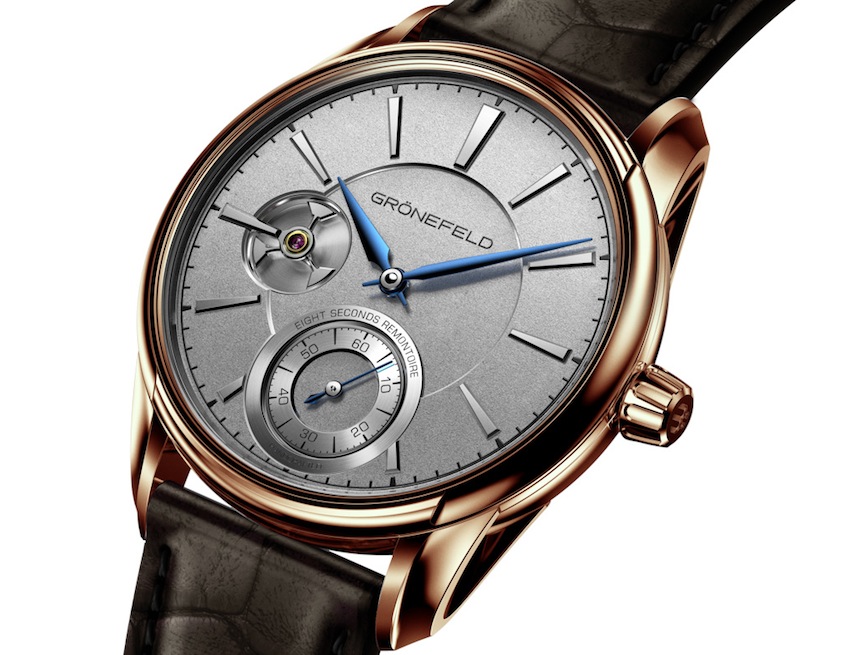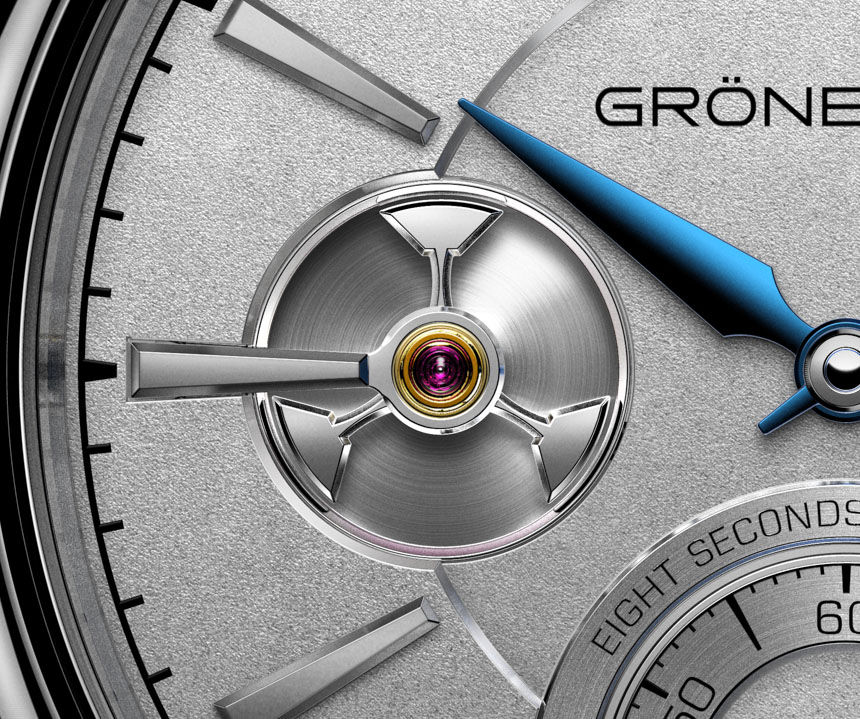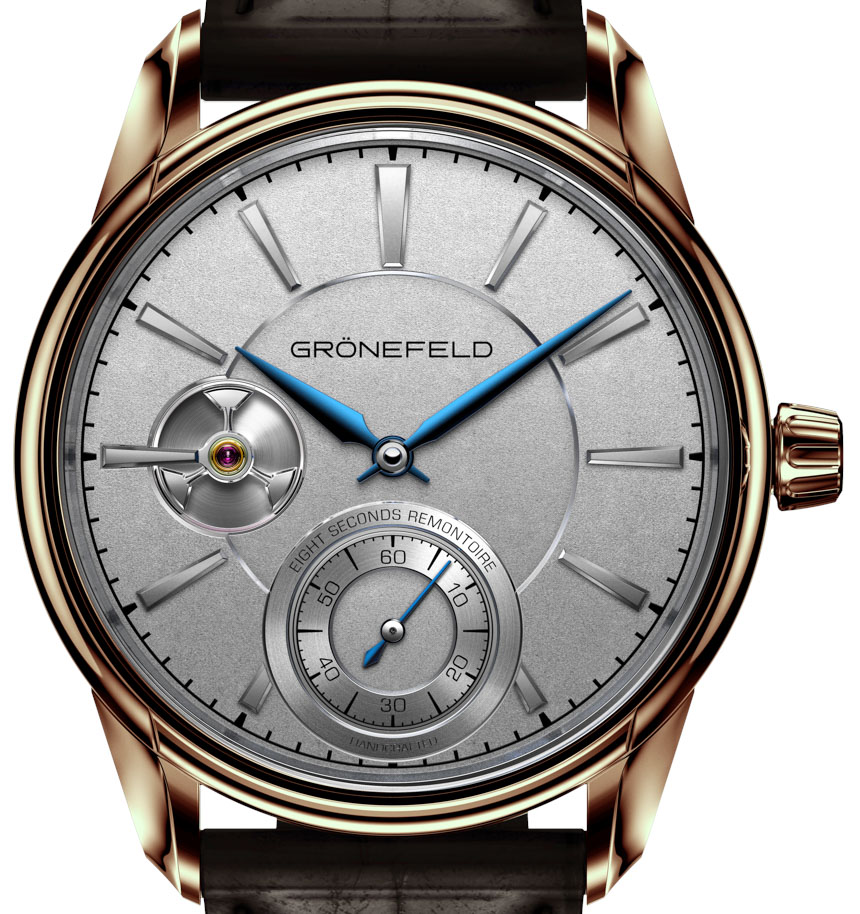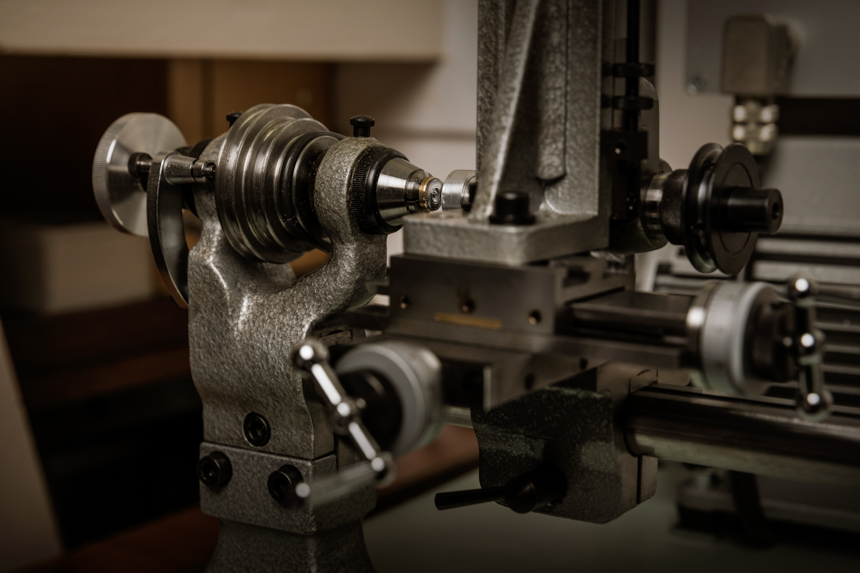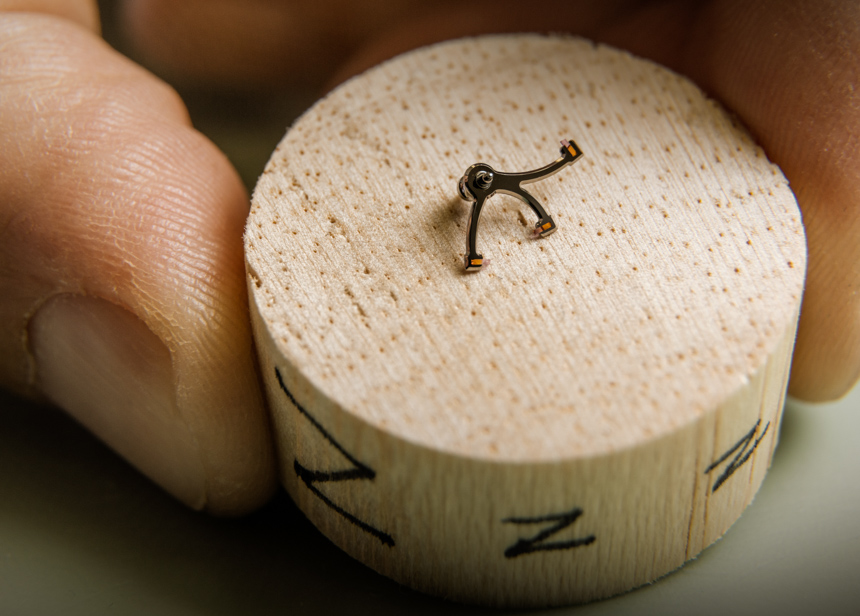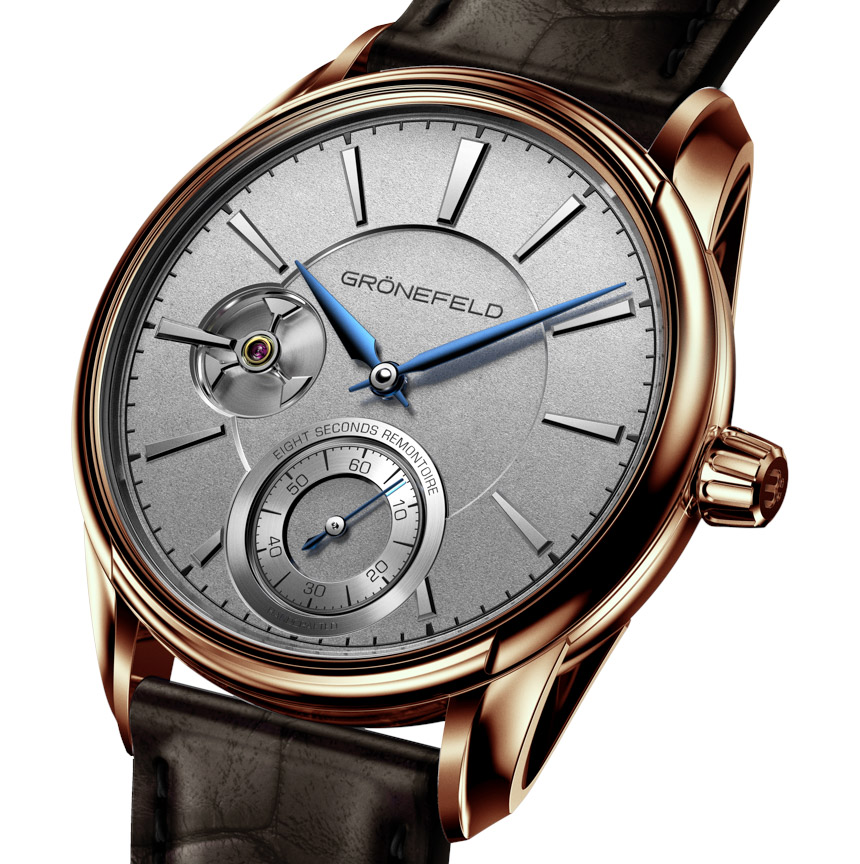
Not too long ago, the remontoire, also known as a constant force mechanism, was one of the rarest, most scarcely encountered specimens of watch complications – and while it remains extremely challenging to engineer and produce correctly, it is true that we have been seeing more and more high-end brands add this age-old, and yet conceptually still highly fascinating device to their super-high-end watches. The very latest addition to this small, but expanding family of impressive remontoire timepieces is the Grönefeld 1941 Remontoire, that spices things up with a case design new for the brand and a genuinely beautiful, 258-part movement.
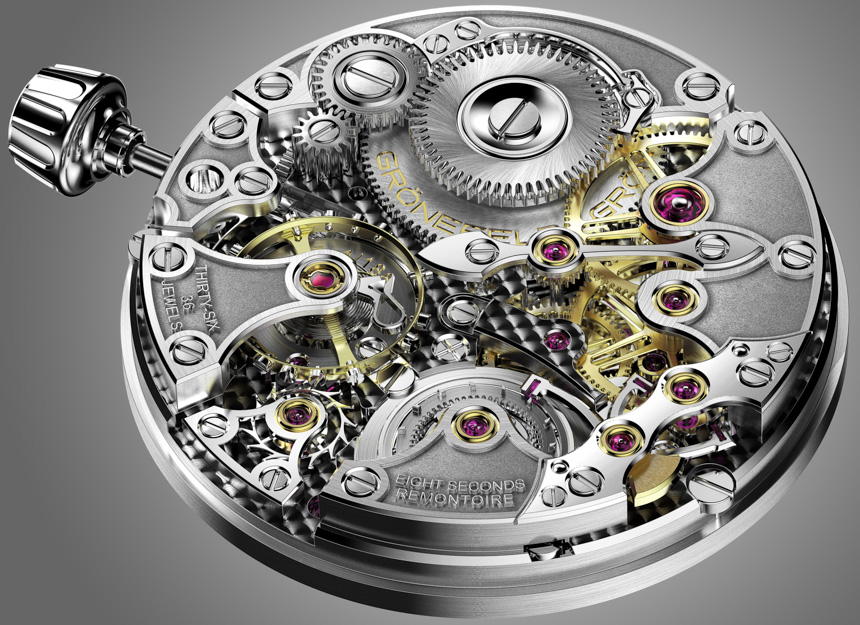
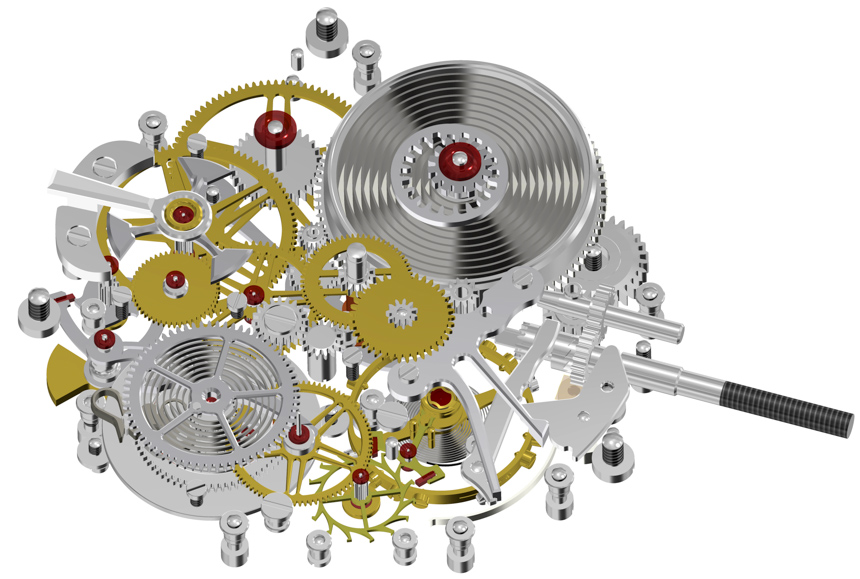
A funny thing with watches is that, although there is a finite number of complications watchmakers can work with, they are tirelessly trying to alter, modify, re-engineer and reiterate them in their own ways, using them as a tool to tell their own stories, inspirations and, dare we say, values. The constant force mechanism is an unusual – but again, increasingly favored – way of telling the world of watch enthusiasts that you have mastered a time-only movement, it is yours to play with and modify. The constant force mechanism is a dead complication in the sense that the wearer cannot interact with it directly, it just works all the time when the watch is running – it is not like a chronograph (and its numerous fun versions) or a chiming or date mechanism, that you can initiate or set yourself… it is just there, ticking away.
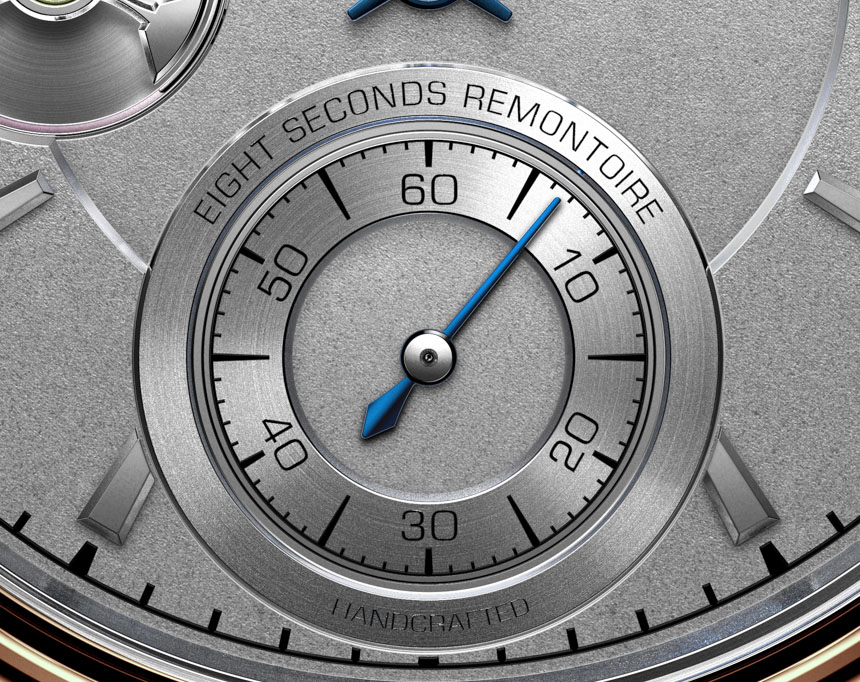
The Grönefeld 1941 Remontoire adds a lovely, and actually plausible story to its use of this mechanism. The 1941 name refers to the year when Tim and Bart’s father was born – an emotional tribute for sure, even if that doesn’t save me from cringing at first when I see a recently established brand use a date for their products that is obviously from an earlier time than their beginning. That aside, the story goes that there is a church clock, created in 1913 in the village of Asten, Netherlands, a place linked to the childhood of the Grönefeld brothers. This clock is equipped with a constant force mechanism, and it was maintained by the brothers’ father and grandfather.
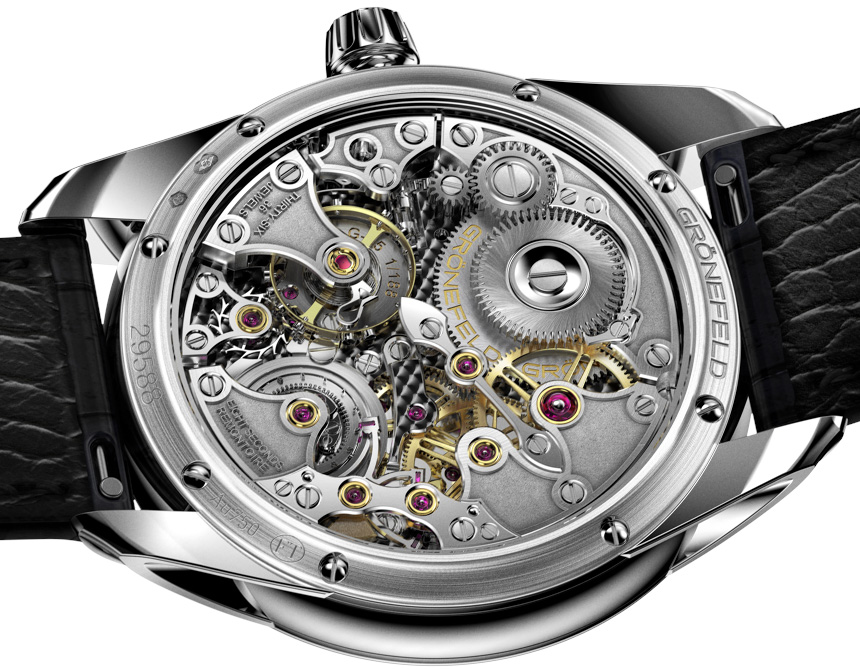
“The rationale for the remontoire being used in the church clock,” as Grönefeld explains, “was that the clock’s display was positioned much higher than the movement itself, that necessitated significant force [from the movement].” This force, or torque, rather, had to be limited so that it wouldn’t damage the escapement and would sufficiently drive the hands in the long-run. What is more – and this is really cool – is that the minute hand was calibrated to jump once every 30 seconds, so that it would break any ice which may have formed in the cold Dutch weather, preventing the clock hands from freezing up or running too slow.

The Grönefeld 1941 Remontoire hence is a tribute to the brother’s childhood in some ways, as it sports an eight-second constant force mechanism, that comprises a small spring near the escapement, that is wound once every 8 seconds. Imagine this as though once every eight seconds you could wind the mainspring to keep it at an optimum level of torque. Clearly, no watch wearer can be expected to do that, but the remontoire’s little spring that is wound every so often ensures that the escapement receives a constant “push” from the fourth wheel.
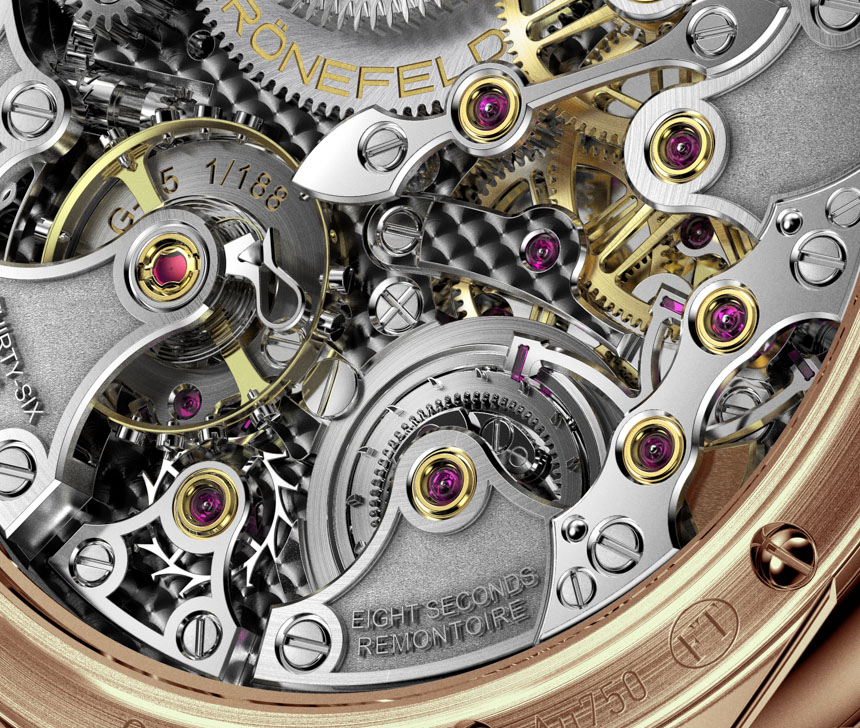
It is an intricate little device and one that is beautifully highlighted both on the movement side, by its clearly marked bridge that says “Eight Seconds Remontoire” in raised letters standing out from a recessed and frost-finished area, and also on the dial at the 9 o’clock position. Notably, the remontoire is often fitted to watches that boast several days or more of power reserve, where it is a genuine concern (by luxury watch standards), that by the time the power reserve nears its end, it will offer considerably worse chronometric performance, as torque supplied by the mainsprings wanes. By contrast, the Grönefeld 1941 Remontoire offers a mere 36 hours of power reserve, which really isn’t too much – but is to some extent justified by the 39.5 millimeter, sensible case size. It surely could have had more go-juice, given the movement was designed for a 44-millimeter-wide-or-larger case.
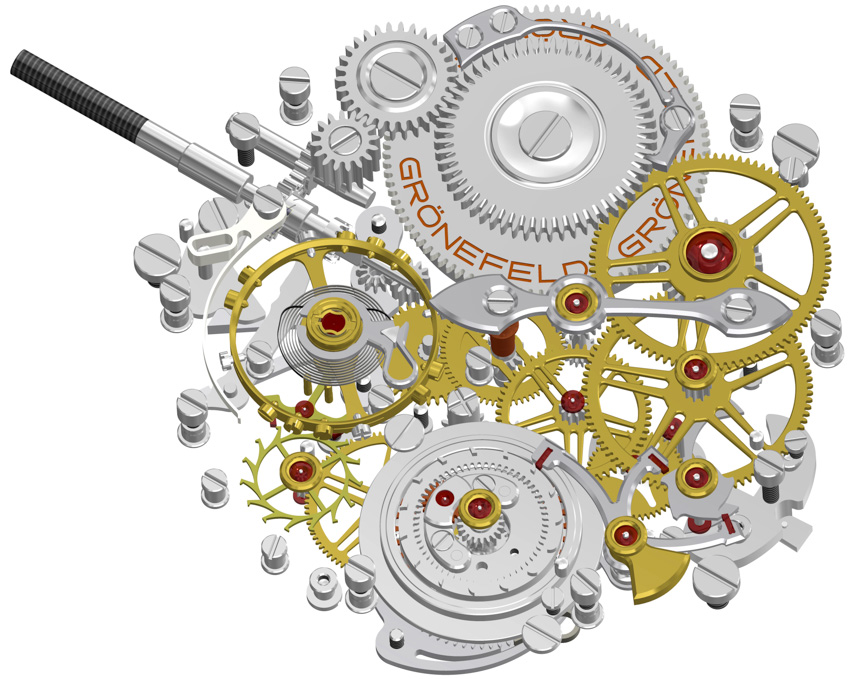
To have an automatically charging little device-within-a-device is many a watch lover’s wet dream, as it is a purely mechanical, ceaselessly operating complication that you can look at and appreciate, once you start seeking something else beyond the balance wheel’s frantic ticking, or the increasingly ubiquitous tourbillon’s rotation… Because, chances are, if you are seriously considering picking up a Grönefeld 1941 Remontoire, you have already satisfied your lust after watchmaking’s more traditional complications. And if all that weren’t enough, just consider that the remontoire uses “a complex satellite gearing mechanism with hypocycloidal gears, twin ball bearings, pinions and jeweled levers,” and you will know you are in for a treat – something that we will explain in a separate article soon.
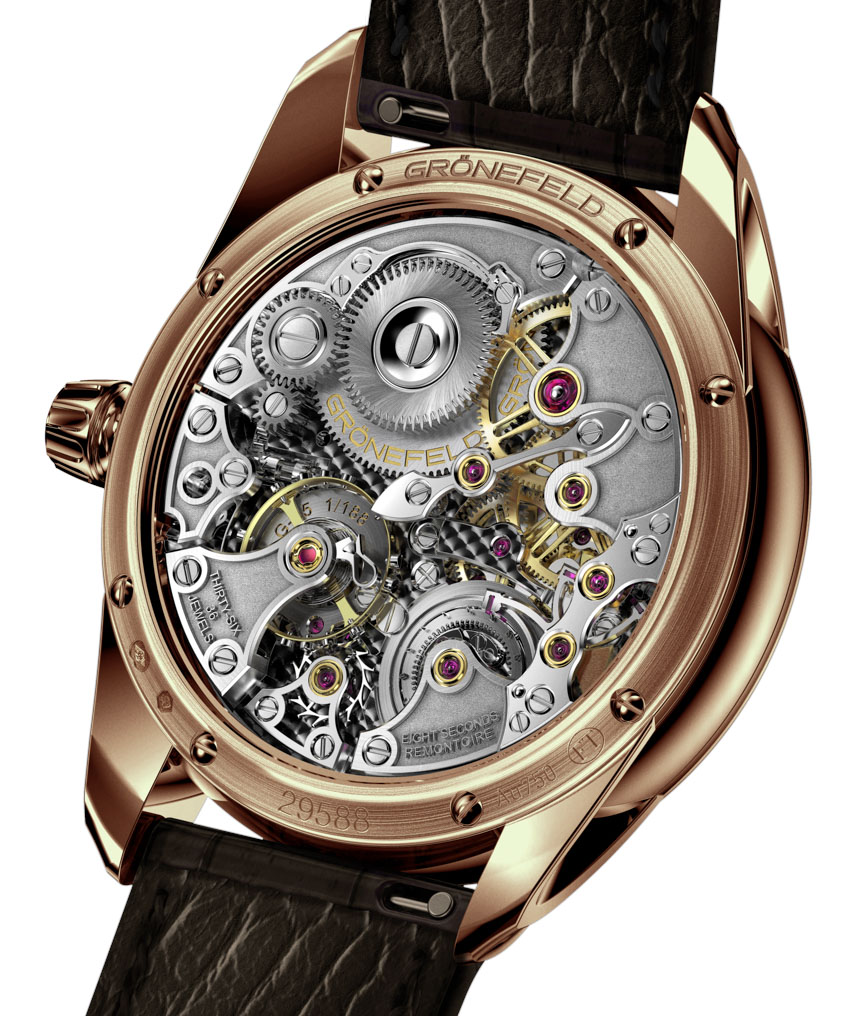
As you would expect, the movement is constructed in typical Grönefeld fashion: the bridges and cocks are all stainless steel (a big plus over the much, much more frequently used brass, because Grönefeld’s steel bridges do look different to any rhodium plated brass out there), their centers have been micro-blasted to create a frosted effect and a truly mesmerizing contrast between the blindingly highly polished edges and screw-heads, and these recessed central areas.
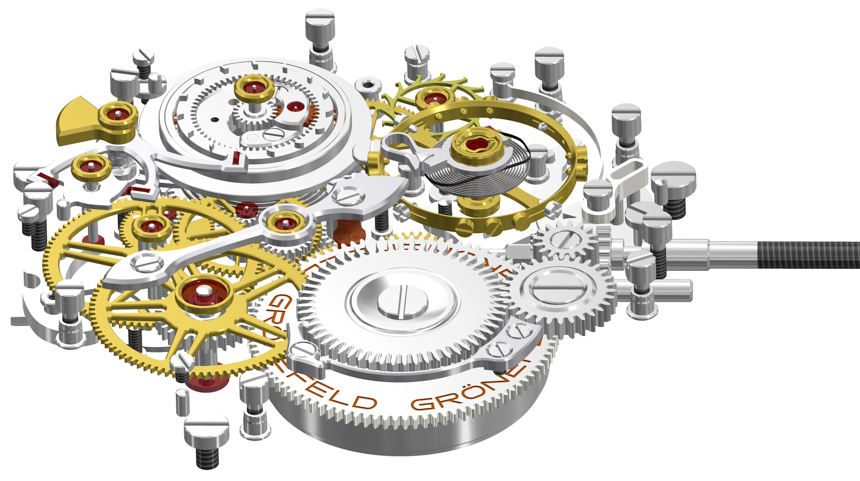
Despite the amazing movement architecture and the neat constant force mechanism, I feel that Grönefeld might have missed a stellar opportunity to make this tribute even more interesting: adding a 30-second jumping minute hand would have made for a terrific homage to that old church clock, and also for a very cool complication overall. The running seconds are on display at the 6 o’clock position anyway, but to have a minute hand always advance to exactly between and then exactly onto the indices, I reckon, would have been not only a first, but also an impressive feature many would have appreciated.
Realistically thinking, to move such a big hand (and with it the hour hand) over such a long distance once every thirty seconds may be beyond the power limitations of a wrist watch movement, and if that is the case, then of course, I duly take back this remark.
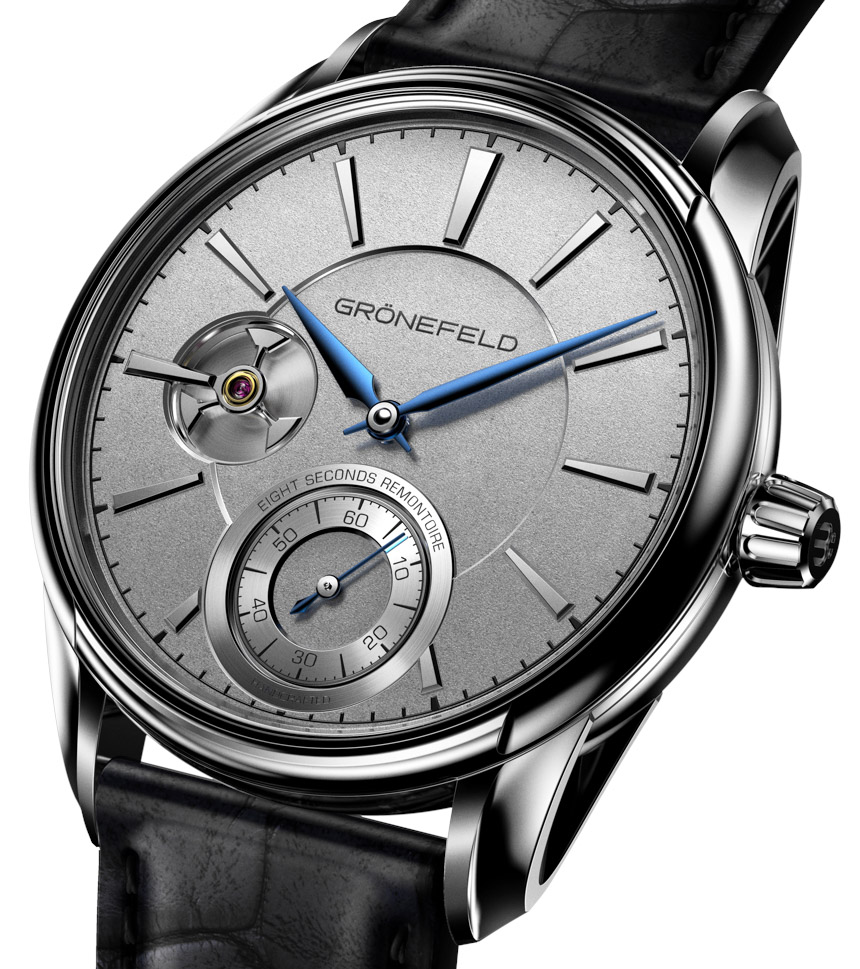
The Grönefeld 1941 Remontoire will come in a 39.5-millimeter-wide case crafted from either white gold or red gold. Notably, the 18k white gold version is alloyed with Palladium 150, that allows for the omission of rhodium plating while still ensuring that the surface of the precious metal will not wear out or fade. At just 10.5 millimeters thick, it will without a doubt appear elegant and subtle on the wrist – something that clearly cannot be said about every constant-force-equipped timepiece. It is a new case design and one that looks unique and graceful, even. This is largely thanks to the excessive milling technique where, between different cuts, parts of the case are polished to allow for complex and yet beautifully finished concave recesses and convex surfaces.
The dial is made from 925 Sterling Silver with frosted and satin-grained surfaces, and should be highly legible with the flame-blued and mirror polished Lancette hands indicating the time.
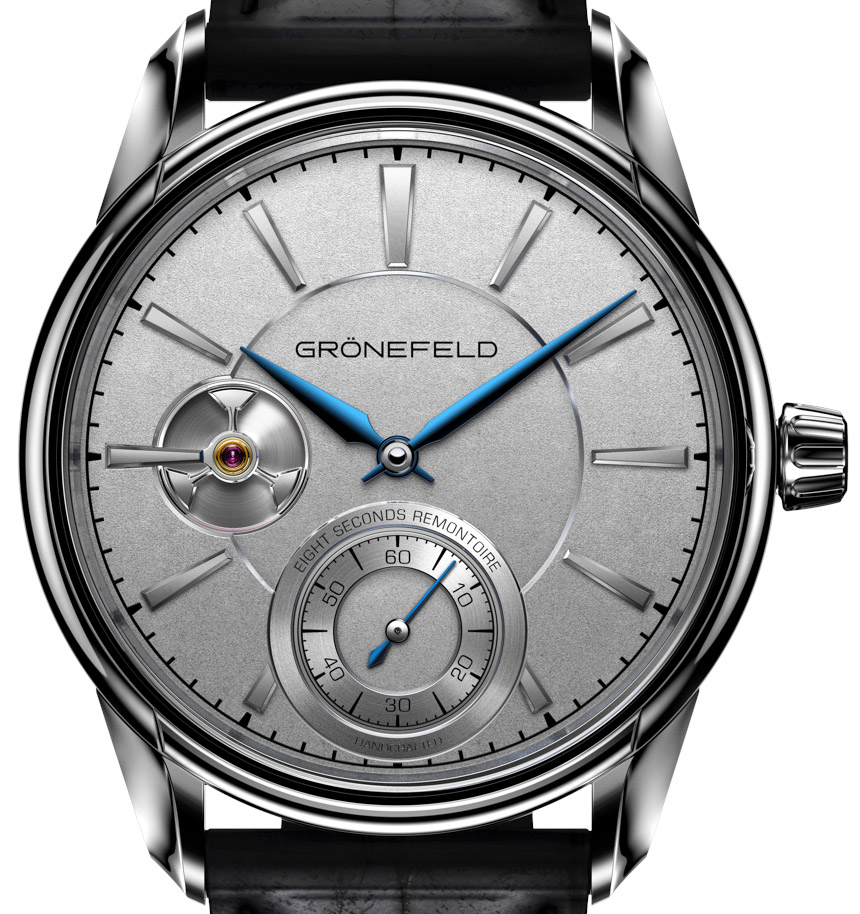
A new case design and an evergreen, remontoire-equipped movement make this new release from the Grönefeld brothers notable. It is great to see that they have the capacity to develop new designs and work out new movements – especially ones that fit into such sensibly sized cases. Price for the Grönefeld 1941 Remontoire in red gold is €49,500, and in white gold it is €50,850. gronefeld.com

